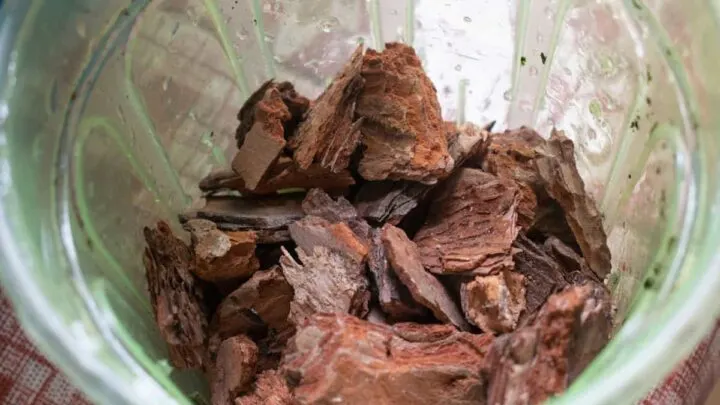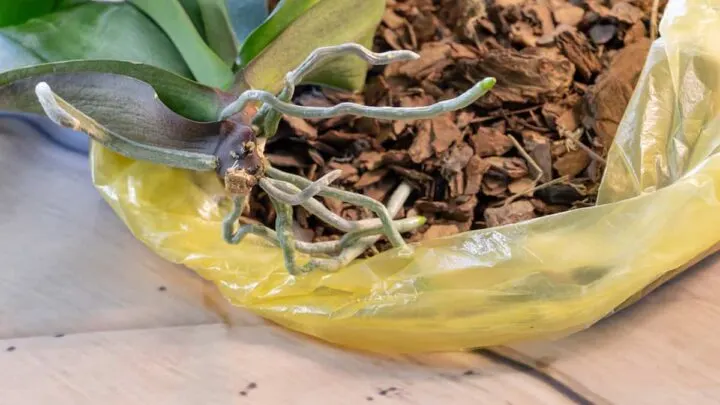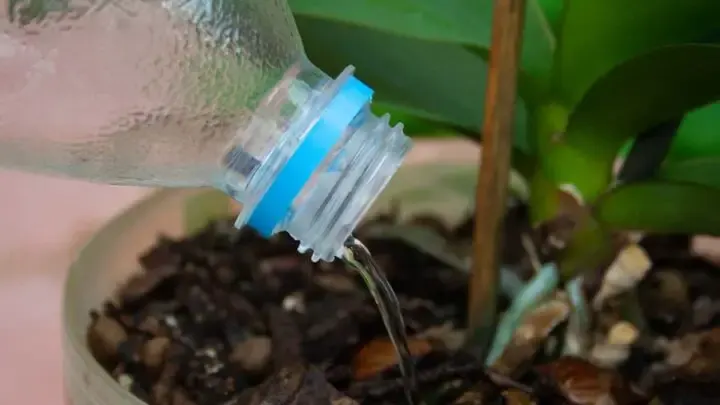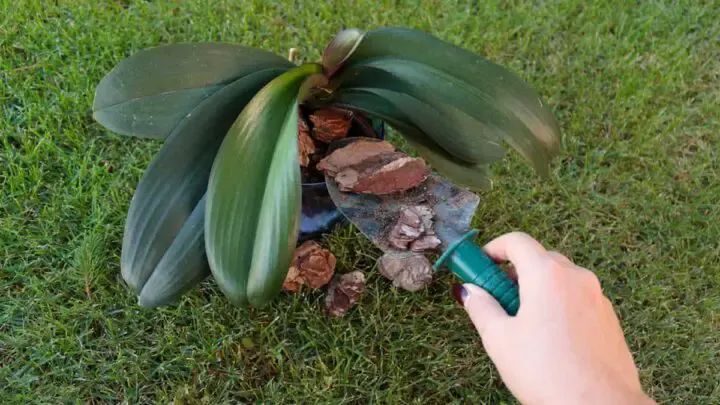Succulents are easy to grow, and most varieties don’t need much water. They will benefit from growing in suitable potting soil that is porous and drains well. If not, the plants can become waterlogged and eventually die. Do succulents like orchid bark?
Orchid bark is not usually included in the succulent soil mix, but it can be used in some circumstances. Tropical succulents, unlike desert succulents, like more moisture and can thrive in soil that contains a fine grade of orchid bark.
Now that you know that some succulents like orchid bark, you may have more questions. Let’s dive in to learn more about orchid bark, what it’s used for, which succulents like it, and much more!

What Is Orchid Bark Made From?
Orchid bark is made from chips of bark from either pine or fir trees. Douglas Fir bark is preferred because it’s harder and takes longer to break down, so the plant won’t need to be repotted as frequently.
Fir bark is produced in the USA, whereas most pine bark used for orchids comes from New Zealand. Therefore, fir bark is more accessible and cheaper.
Orchid bark comes in different sizes or grades. Most orchids prefer medium or coarse-grade bark.
Orchid soil mixes may also contain perlite, sphagnum moss, charcoal, or chips from coconut husks, known as coco coir.
How Does Orchid Bark Affect Succulents?
As noted above, orchids prefer medium or coarse-grade bark. These types provide air pockets for the orchid roots because these roots require exposure to air to develop. Succulents, however, don’t want air pockets surrounding their roots.
Another problem with the air pockets created by orchid bark is that succulents can tip over because their roots can have a hard time getting established. They need their shallow roots in a mixture that helps to anchor them.
Orchid bark also retains a good deal of moisture. Succulents need good drainage but only a little water. Their roots can rot in orchid bark due to the amount of moisture that it holds.
The exception is tropical succulents, which come from areas with high humidity. They can do well in orchid soil mix because they need more moisture than desert succulents. They need to dry out between watering, and the orchid bark in the mixture provides good drainage to help with that.

Examples of tropical succulents are:
- Stonecrop sedum
- Cotyledon orbiculata (known as pig’s ear or round-leafed navel-wort)
- Aloe ciliaris (known as climbing aloe)
- Crassula capitella campfire
Using small-grade bark, which is finer, eliminates the air pockets, but it will absorb and hold even more water. If it’s going to be used for succulents, it needs to make up a small portion of the mix rather than be used alone.
What Can I Use Instead of Orchid Bark?
Add perlite or pumice to your potting mix to achieve good drainage instead of orchid bark. Neither holds water, and both aerate the soil and decrease the soil’s density. This prevents the roots from sitting in compacted damp soil, but without the air pockets around them that result from using orchid bark.
Perlite, which looks like tiny pieces of styrofoam, is made from volcanic glass heated until it pops like popcorn. It’s very lightweight and aerates the soil. Perlite is easy to find at garden centers and is inexpensive.
You can also use pumice, a porous rock formed during volcanic eruptions. It aerates the soil and improves the soil’s drainage like perlite does. Pumice is harder to find and is more expensive than perlite.

Are There Better Soil Mixes to Use Instead of Orchid Bark?
There are soil mixes you can buy that are labeled for cactus and succulents. These contain a combination of potting soil and usually sand and perlite.
One popular brand of succulent and cactus potting mix is fast draining and contains no soil at all. Bonsai Jack makes it. It’s composed of pine coir, a fine-grade pine bark, and two other proprietary ingredients: a fired clay and a fired soil amendment.
You want your succulent potting soil to be well-draining and light and airy. You can take succulent or any potting soil and add to it to boost these properties.
What You Don’t Want in Succulent Soil
Two common amendments in general potting soil are peat moss and vermiculite. Both of these help soil hold water.
As mentioned in this article, succulents do not want to be planted in soil that retains water. So don’t buy soil labeled for succulents that contain either of these. Soil containing them won’t drain well enough. This applies to both desert and tropical succulents.

Homemade Succulent Potting Soil Mix
Homemade recipes for a succulent potting mix vary. Some call for perlite or pumice to make up half of your succulent’s soil mix, with regular potting soil making up the remaining half. Others call for much less perlite or pumice and add coarse sand or poultry grit.
Here is a recipe containing all three of these:
- Three parts potting soil
- Two parts coarse sand or poultry grit
- 1 part perlite or pumice
Do not use beach sand or construction sand. Sand sold for use in sandboxes works well. Poultry or chicken grit can be substituted for coarse sand.
Final Thoughts
Succulent plants have special needs when it comes to growing conditions. One of the most important things is the soil they grow in. The majority of succulents are plants native to the desert. These need soil that drains well and doesn’t retain too much moisture.
Orchid bark holds onto more water than desert succulents require and can cause root rot. It also creates air pockets that are too large for succulent roots.
There are tropical species that need more water than desert ones. Orchid bark in their soil can be suitable for these plants. However, it should be a fine-grade bark that won’t create an air pocket problem.
You’ll be rewarded with healthy, thriving plants by providing your succulents with the appropriate soil and the right amount of water and light. Enjoy growing the many shapes and colors of succulents.

Hi there, my name is Allie and welcome to my blog; GareningWithAllie!
Much of what you see written here is just our personal experiences with gardening. Along with the content I write here, there is also a unique collection of gardening topics covered by some of our close friends. I hope you find everything you read here to be helpful, informative, and something that can make your gardening journey the most lovely experience ever! With that said, Happy Gardening!
